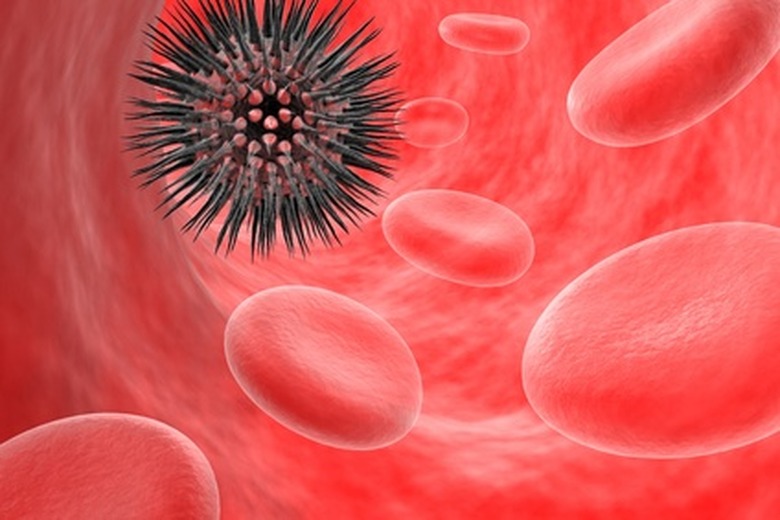Ideas For Making A 3D Model Of A Cell
Cells are often referred to by scientists as the basic building blocks of all natural lifeforms. Though reading about cells will offer a passive understanding of basic cell structures and function, three dimensional cell models offer the opportunity to share a tactile interaction with a cell. Three dimensional cell models utilize a variety of creative building materials to help identify cell structures and conceptualize the functions performed by and within a cell to support life.
Edible Models
Edible Models
Edible cell models are a practical and fun way to demonstrate a cell's various parts. There are several common ways to prepare a cell model. One of the simplest preparations is to create a malleable base material such as crispy rice treats by mixing one part melted marshmallow to two parts puffed rice cereal. Once the material is mixed, it can be molded into a half dome to resemble a cross section of a cell. Use various small candies to represent different cell parts within the mold; a malted milk ball could be a nucleus and several threads of licorice make suitable microtubules. Another option is to make a clear gelatin mold in a clear glass bowl. Once the mold has been refrigerated for several hours, place other food items into the mold to represent various cell parts like chromatin and reticulum. When the mold has turned completely solid, the cell parts will be suspended within the mold yet still visible. Use label flags made from toothpicks to identify each cell part.
Clay Cells
Clay Cells
Another malleable material that is suitable for creating a cell model is clay or dough. Clay can be purchased or made at home using a simple mixture of two parts flour to one part each salt and water. Create or purchase a wide variety of clay colors so that each cell part is distinct. To create a basic cell form, line a round bowl with wax paper and press the clay against the edge of the bowl; you can leave the dome hollow and suspend additional clay pieces within the dome on toothpicks to represent cell parts. Alternatively, you may fill the entire dome, in which case you should simply lay additional cell parts on the top flat surface. Shape additional clay in various colors to resemble integral cell parts including cell membranes and ribosomes. Let the clay harden overnight before removing the dome from the bowl; some clay can be cooked in an oven per the manufacturer instructions to increase its hardness and durability.
Plastic Bag Cells
Plastic Bag Cells
Use a plastic bag and a thick syrup to create a three dimensional model of a cell that you can move and feel. Fill a large clear plastic storage bag with various non-water soluble materials that could represent various cell parts; for example, a small balloon filled with sand makes a suitable nucleus while gummy worms or yarn are ideal materials for cell proteins. Fill the bag with corn syrup; you can also use baby oil or vegetable oil if you do not have corn syrup, though the consistency will be a bit more watery. To prevent leaking, place the filled bag into an additional bag and seal the bags with their closures as well as a strong adhesive like duct tape. Because the parts within the model may move around, provide a separate key that outlines what each material represents within the cell.
Cite This Article
MLA
Wahlig, Hannah. "Ideas For Making A 3D Model Of A Cell" sciencing.com, https://www.sciencing.com/ideas-making-3d-model-cell-6705594/. 24 April 2017.
APA
Wahlig, Hannah. (2017, April 24). Ideas For Making A 3D Model Of A Cell. sciencing.com. Retrieved from https://www.sciencing.com/ideas-making-3d-model-cell-6705594/
Chicago
Wahlig, Hannah. Ideas For Making A 3D Model Of A Cell last modified March 24, 2022. https://www.sciencing.com/ideas-making-3d-model-cell-6705594/
